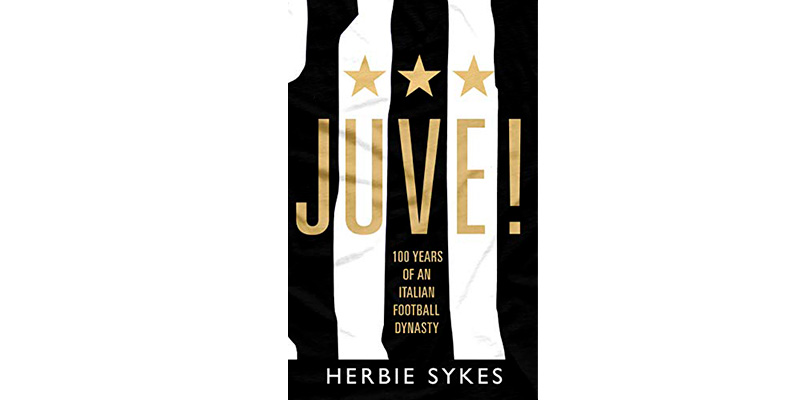
Yellow Jersey, £10.99
Reviewed by Mark Sandell
From WSC 426, November/December 2022
Buy the book
This is less a book about football and more of a calcio-based thriller, containing as it does tales of sex, drugs, corruption, power, and occasional violent and tragic deaths. As the author Herbie Sykes says, “eleven against eleven it may be, but there’s infinitely more to Italian football than Italian football”.
Sykes writes with great flair, a deep knowledge of Italy and its social background and charts the history of “la vecchia signora” – the Old Lady – from their foundation by the “bunch of posh kids” in 1897 who decided the Latin word for “youth” would do nicely for a name. They played in pink, naturally with a dicky bow and pantaloons, before buying a proper kit from a shop in Nottingham. One of their old shirts accompanied the order as an example of what was needed. The shopkeeper thought they were pink because the colours had run in the wash, and so sent Notts County shirts rather than Forest as the County ones at least had some white in them.
The story of Juve is also the story of the city’s other club, Torino, and the relationship between the two – not always adversarial – will resonate with fans of other big-city teams. Torino are seen as the “real” club of the workers in the city, while Juve lay claim to being the elite club of all Italy, and with some justification. A 2016 survey showed 34 per cent of fans – 14 million Italians – supported Juve. But three-quarters of Inter’s tifosi dislike Juve more than their city rivals, and for 97 per cent of Napoli fans, the bianconeri are their number one hate figure.
The mixture of pride in and antipathy towards the club was bound up with the owners. The Agnelli family’s Fiat factories supplied the whole country, not just with cars and tractors, but tanks and helicopters for the army: “The Agnellis’ wealth was as infinite as the political muscle it bestowed.” That muscle sided with Benito Mussolini in the 1930s, and against the trade unions in the 1980s. But Italy’s 1982 World Cup-winning team, coming after a 44-year wait, featured six Juventini and cemented “the idea that the club, the company and the tricolore were one and the same”.
Sykes does a brilliant job of steering the reader through the folklore and the conspiracies. As he says, Italian football is essentially binary – a “Juventus version and an anti-Juventus version”. Even the so-called European “curse” of never winning the European Cup was ended in 1985 but was overshadowed by the appalling tragedy at Heysel.
The book doesn’t shy away from the various bribery and doping scandals, but even that is justified by some Juve fans along the lines of “everyone is doing it, we just got caught”. The reader is left to decide on which Juve version is the most compelling: the trophy-winning team that reminds you of Michel Platini, Giampiero Boniperti, Roberto Baggio and Alessandro del Piero doing their stuff, or the team that in the eyes of some has become synonymous with cheating.
This article first appeared in WSC 426, November/December 2022. Subscribers get free access to the complete WSC digital archive
